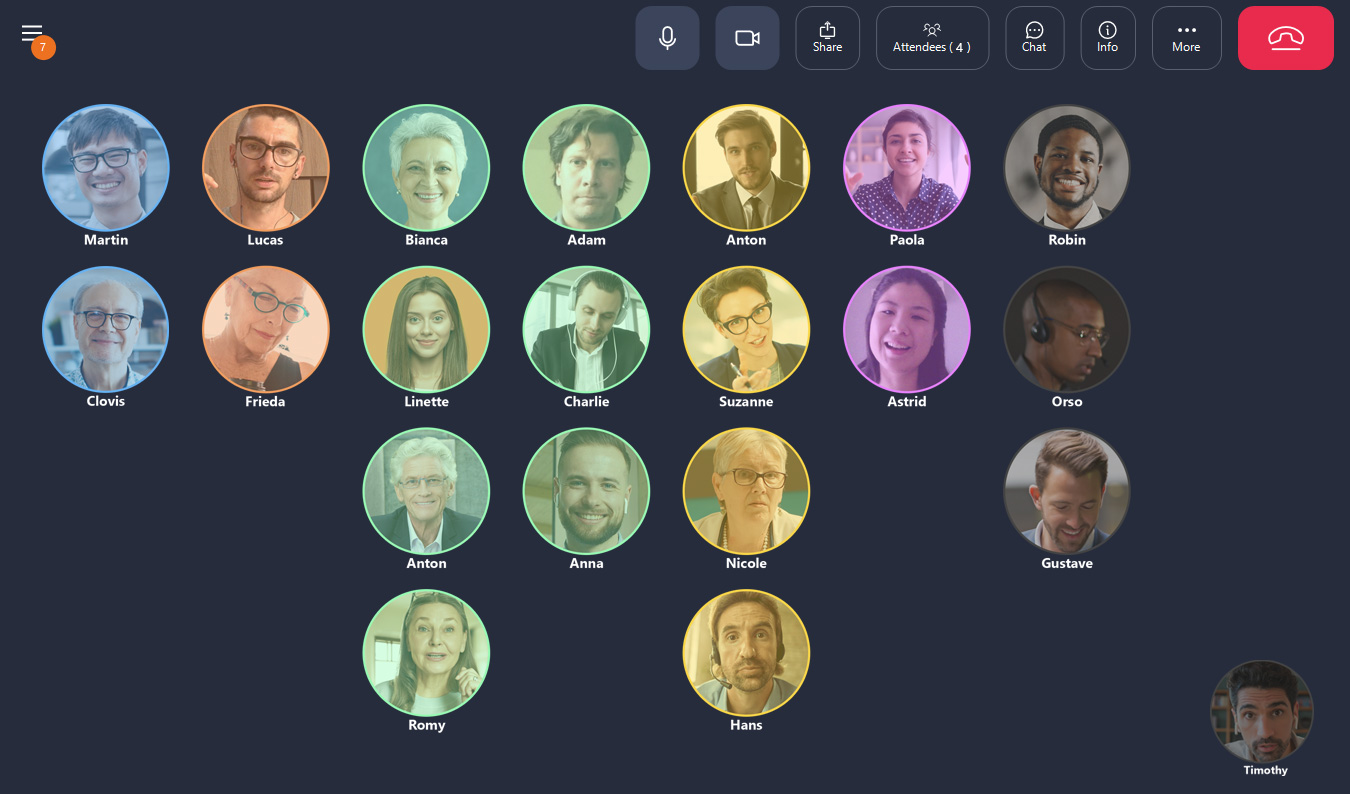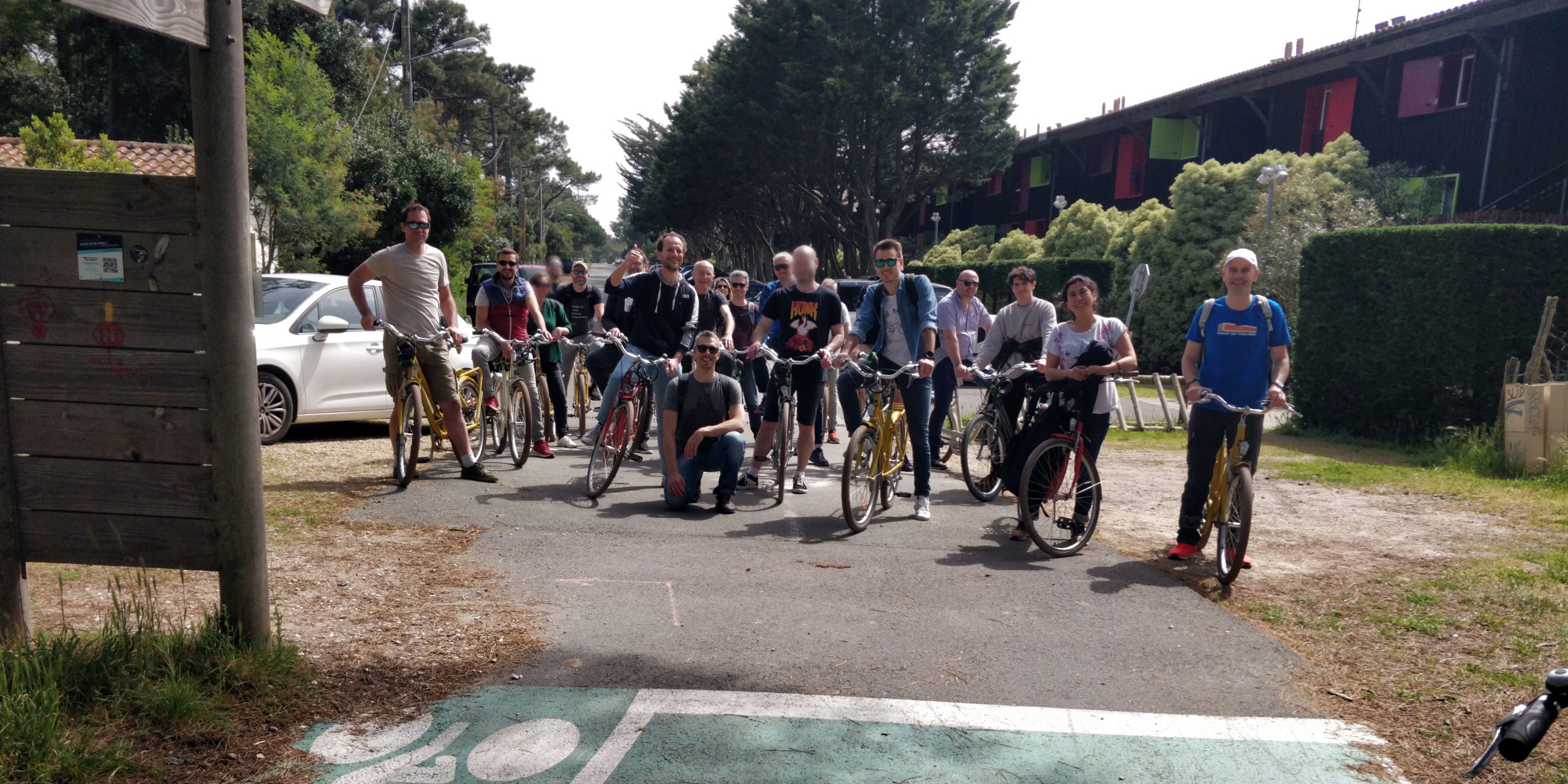
How to Trust Your Employees in Hybrid Remote Work
Employees no longer work solely in the office, and companies need to adapt their organisational and management models to teleworking, to put trust at the heart of collaboration.
Hybrid telework: the fragmentation of the office.
Remote work, whether partial or complete, has profoundly transformed employees’ relationship with work and the organizational structures of companies. Even though 47% of French companies had adopted remote work by 2023 (source: INSEE), its implementation and especially its sustainability are still in question today.
Indeed, the diversification of work locations marks a break from the traditional model where all employees gathered in a defined office space. With hybrid remote work, the office extends to various locations, impacting the way teams are managed. In this context, some companies struggle to adapt and to trust their teams for successful remote collaboration.
Three main axes to improve trust
Training in best practices for remote work
If its implementation is not supported, remote work can lead to difficulties for employees and, in the long run, result in failures.
Horaires et flexibilité
Remote work introduces a certain degree of freedom for employees. Working from home allows them to take more regular breaks or even adjust their schedules to fit their family life. This flexibility is valued in some companies that practice remote work, as it promotes a better work-life balance for employees. Consequently, employees enjoy a certain level of autonomy in completing their tasks, far removed from the pitfalls of presenteeism in the office.
In this context, to strengthen trust between managers and employees regarding this aspect, the first step is to clearly communicate, from the beginning of the collaboration, the norms regarding working hours and how flexible these are. These norms can be shared in the form of a general information sheet about the organization or in a welcome booklet provided during onboarding. Once these are understood, more personalized discussions can take place to adapt these measures according to the needs and constraints of each individual. The objective is to clarify the subject to avoid misunderstandings and frustrations.
Cyber Hygiene
Trust in hybrid remote work also involves adhering to security rules. As cyber threats affect many sectors, especially leading up to major events, cybersecurity must be one of the essential aspects to consider in remote work. Training and awareness on the subject are indispensable, particularly on:
- Internet connection security and VPN
- Password management and authentication methods
- Phishing, ransomware, and other common cyberattacks
- The use of personal devices or BYOD (Bring Your Own Device)
- Protection of IT equipment at home and on the move
- Or the use of secure software (against shadow IT)
However, IT security and hygiene rules must also be clearly defined. For example:
- Never connect to public Wi-Fi networks,
- Do not download software or applications not approved by the IT department,
- And do not connect external devices to your professional equipment (USB keys, hard drives, etc.).
Discover the 5 tips from Julien, System and Security Administrator, to secure remote work.
Maintaining the Connection with Teams
The manager’s role is crucial for the success of teams in a hybrid remote work environment. To maintain the connection, frequent video conferences or calls can prove counterproductive and stressful for employees. The hybrid manager should maintain regular communication while promoting accountability. These two aspects will facilitate mutual trust with employees and prevent isolation and disengagement.
To achieve this, develop a culture of feedback by encouraging employees to provide regular feedback on their work. This helps foster spontaneous exchanges while contributing to continuous improvement.
Find out more about hybrid management
Deploy the Right Video Collaboration Tools

Certain video collaboration tools ensure the continuity of the office environment, regardless of where the employees are located.
This is the case with the Tixeo solution, which allows teams to work and interact in a virtual open space. In the form of bubbles, employees can see each other and work quietly on their own. To chat with a colleague or hold a meeting, a simple click on one or more colleagues’ bubbles is enough. The result: better communication between teams and improved trust.
Discover Tixeo virtual open-space
Contre le « bossware »
Due to a lack of trust in their employees, some companies resort to using “bossware.” Installed on the workstation, this spyware collects a maximum amount of data on the worker’s activity, providing an overview of their productivity.
Heavily used since the widespread adoption of remote work in 2020, these types of software are now being enhanced with the integration of AI modules. However, their use can harm the respect for privacy and personal data of employees, especially if the employees are not informed about their usage.
It is therefore preferable to implement processes and management methods that create a climate of trust at work rather than using software that could damage the professional relationship.
The success of hybrid remote work corresponds to the level of trust placed in the employee. The more the employee feels valued, the more likely they are to grow and invest in the organization. For nearly 10 years, Tixeo has been betting on trust to develop its 100% remote collaboration model.
FAQ :
Hybrid remote work combines remote and in-person work. Employees alternate between working from home and the office, transforming traditional organizational models.
It is essential to train employees on best practices for remote work, maintain regular communication, and use suitable collaboration tools like Tixeo.
Proper training reduces obstacles, improves productivity, and strengthens trust by clarifying expectations and the flexibility allowed by remote work. Additionally, training addresses good IT security practices and reduces the risk of cyberattacks.
Cyber threats require comprehensive and specific measures for remote workers, such as using VPNs, multi-factor authentication, good password management, and awareness of phishing risks.
Maintain regular interactions without being intrusive, encourage feedback, and use video collaboration tools to create an interactive virtual workspace and strengthen the connection between employees.
Spyware can violate employee privacy and degrade trust between employees and management. It is better to adopt management practices that emphasize transparency, autonomy, and responsibility.
Trust in a company is based on three fundamental elements: performance measurement, autonomy, and regular communication between the employee, their team, and their manager.
The three pillars of trust are: positive relationships, recognized expertise, and consistency. Managers must establish reliable relationships, fairly evaluate performance, and be consistent in their actions and decisions for their team.
Companies should:
• Measure performance based on results rather than hours worked
• Avoid excessive employee monitoring, especially through constant calls
• Focus on achieved objectives
• Support employees through skill development and regular feedback
To find out more :












